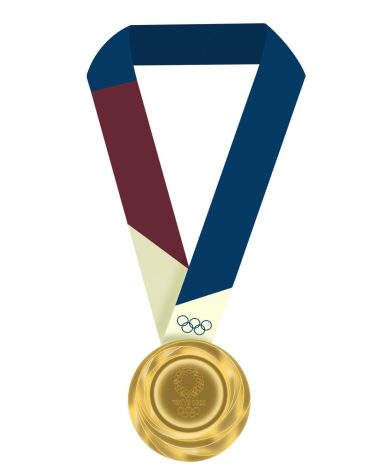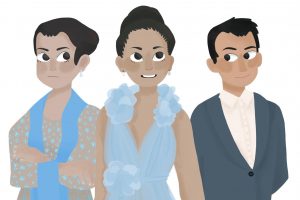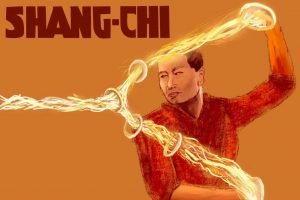Making history and headlines: Asian representation in 2021
To some, 2021 may be remembered for the Capitol riots, the COVID-19 vaccine becoming available and life getting back to some normalcy. For me and the Asian community, 2021 will be remembered for the abundance of Asian representation both on screen and in the media.
*Opinion
To some, 2021 may be remembered for the Capitol riots, the COVID-19 vaccine becoming available and life getting back to some normalcy. For me and the Asian community, 2021 will be remembered for the abundance of Asian representation both on screen and in the media. With all the positive representation our community was gifted, we had to face hardships too. We watched as anti-Asian hate rose, fearing for the future of our community.
Growing up, “Ni-Hao Kai-lan,” a Chinese children’s show, and “Mulan,” an animated Disney movie were the main forms of Asian representation I had. Amaya Gaus, sophomore, had a similar experience. Gaus is half Chinese and said she didn’t realize there was a lack of representation in the media when she was younger.
“My mom, [who is] from China, helped me with [Asian exposure], but in American media it’s not [prevalent],” Gaus said. “I didn’t really realize how much of an issue it was, because even though I’m half Asian, I’m very white passing. It never occurred to me that I needed representation for the Asian part of me.”
While teenagers like Gaus and I didn’t have much representation to grow up with, younger generations of Asian kids may have a different experience. With the recent release of Marvel’s film, “Shang-Chi and the Legend of the Ten Rings,” came a new superhero for Asian children to look up to. Sarah Neumann, junior, is Chinese and said it is good that Asian children will have an idol who looks like them.

“When you’re a kid, you look up to people that look like you, so [for] kids it’s great that they can finally see someone [in film who] looks like them,” Neumann said. “It’s also disappointing because [Shang-Chi] is not [one] of the bigger Marvel characters, like Black Widow or Captain America. It would be nice to [have] representation in a big character [role].”
“Shang-Chi and the Legend of the Ten Rings” made history as Marvel’s first Asian-led film, which caused conversation surrounding Marvel’s intentions in producing it. Gaus said while she found aspects of the film stereotypical, she appreciated the authentic portrayal of Chinese culture.
“It’s hard to find that line between authenticity and stereotypes in some cases,” Gaus said. “[It] was neat how they [had] nice fight scenes with Asian martial arts [as] opposed to having just cool gadgets. Some of it taught [the cultural] background stories and legends, and it really taught people more about the [Chinese] culture.”
Asian representation has also made an appearance on the Olympic podium. Suni Lee, Hmong-American and gymnast, is the first Asian-American to win gold in the women’s individual all-around competition. While most eyes were on Simone Biles, I was mesmerized by Lee. It was refreshing to see how excited her family was for her. Edrin Chen, KHS Chinese teacher, said she was excited to see Lee win gold.
“I was screaming when she won [gold],” Chen said. “You want to see someone similar [to you] who shares the same background [and] shares the same story [as you]. We need more girls and boys like her to bring their [ethnic history to the light] so everyone can learn from them because everyone has a different story.”
Since her Olympic win, Lee has gained fame and 1.6 million Instagram followers. She has appeared on Dancing With the Stars and attended the Met Gala. Sadly, according to the Los Angeles Times, Lee experienced anti-Asian hate through racist slurs and pepper spray in September. Lee is a role model for me and many other Asians, so hearing that she was attacked is a reminder that we still have to deal with hardships. Lee has helped represent us, and Gaus said it’s disheartening she has to face racism because of it.
“It’s great [the Hmong are] finally getting the representation they deserve,” Gaus said. “[But] once you get representation, people are out to target you and that’s really disgusting and sad.”
Along with Lee, 9,000 other Asians have experienced anti-Asian crimes in America since the start of the COVID-19 pandemic, according to NPR. My sister, who is adopted from Korea, is part of the 9,000. She dealt with verbal hate from a white woman in the beginning of the pandemic. COVID-19 originated in Wuhan, China, contributing to the 73% increase in anti-Asian hate, according to FBI data.
“I was heartbroken when [anti-Asian crimes] started happening, and then I [realized] right away that it could happen to me where I live,” Chen said. “If you are in the community and you see hate-related crimes, please stand up and speak up for those people who are the victims.”
Not many Americans are aware of the increase in anti-Asian hate. Yet when six Asian women were murdered in Georgia spas, many people showed our community support through donations to Asian-American Pacific-Islander (AAPI) organizations and by attending protests. Due to how quickly posts on social media supporting Asian-Americans came and went, Gaus said some of it seems ingenuine.
“I’m sure some of [the support] is genuine but some of it seems really performative,” Gaus said. “People who have never experienced hardships because of their race don’t fully understand and grasp the harm people actually endure. People belittle it sometimes and treat it as a trend to get brownie points.”
Throughout my time in KSD, I have experienced multiple forms of racism from my peers and teachers. Kids have pulled their eyes back at me and teachers have attributed my grades to my race. Other Asian students, like Neumann, have experienced similar situations.
“This one kid came up to me in my social studies class [in] eighth grade and the first thing he said to me was ‘Ching-chong,’” Neumann said. “I [didn’t] want to express my anger because I felt like it was going to draw a lot of attention to myself. A lot of the time when you face racism, you’re almost forced to shove it down and ignore it.”

Due to the lack of Asian representation in America, there has also been a lack of education surrounding Asian culture, causing the ignorant interactions I have had with others. Gaus said she never acknowledged how problematic the racism she experienced was, simply because it was normalized. Racism is learned, so we need to teach children about race when they are young. In order to relieve Asian students of traumatic racist situations, Gaus said different cultures need to be integrated more into the curriculum.
“Part of the curriculum for elementary school should be teaching students not only about Asians, but how we are all different and how it’s OK to be different,” Gaus said. “If we could teach [children] how to treat people correctly and teach them what’s right from wrong, [racism would decrease].”
My Asian friends and I like to joke about being minorities. But not having people you can ethnically relate to is difficult. Only 25 Asian students attend KHS, according to KSD records. Neumann said the lack of Asian students has affected her deeply.
“[The lack of Asians is] horrible because when you don’t have other people that look like you, you feel like the odd one out,” Neumann said. “When you don’t have that sense of community, you feel like you’re not represented and you’re not appreciated.”
Your donation will support the student journalists of Kirkwood High School. Your contribution will allow us to purchase equipment and cover our annual website hosting costs.

she/her
Hobbies and Interests: writing, baking, hanging out with friends, bullet journaling, watching movies
Favorite song: good 4 u by Olivia Rodrigo
Favorite...

She/Her
Hobbies and Interests: painting, going on hikes with my dog, gardening, and watching Rupaul's Drag Race
Favorite song: Remember When by...











